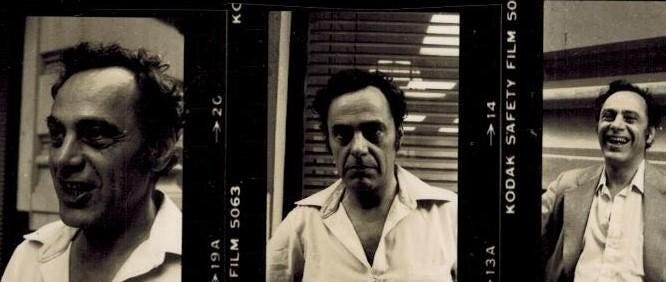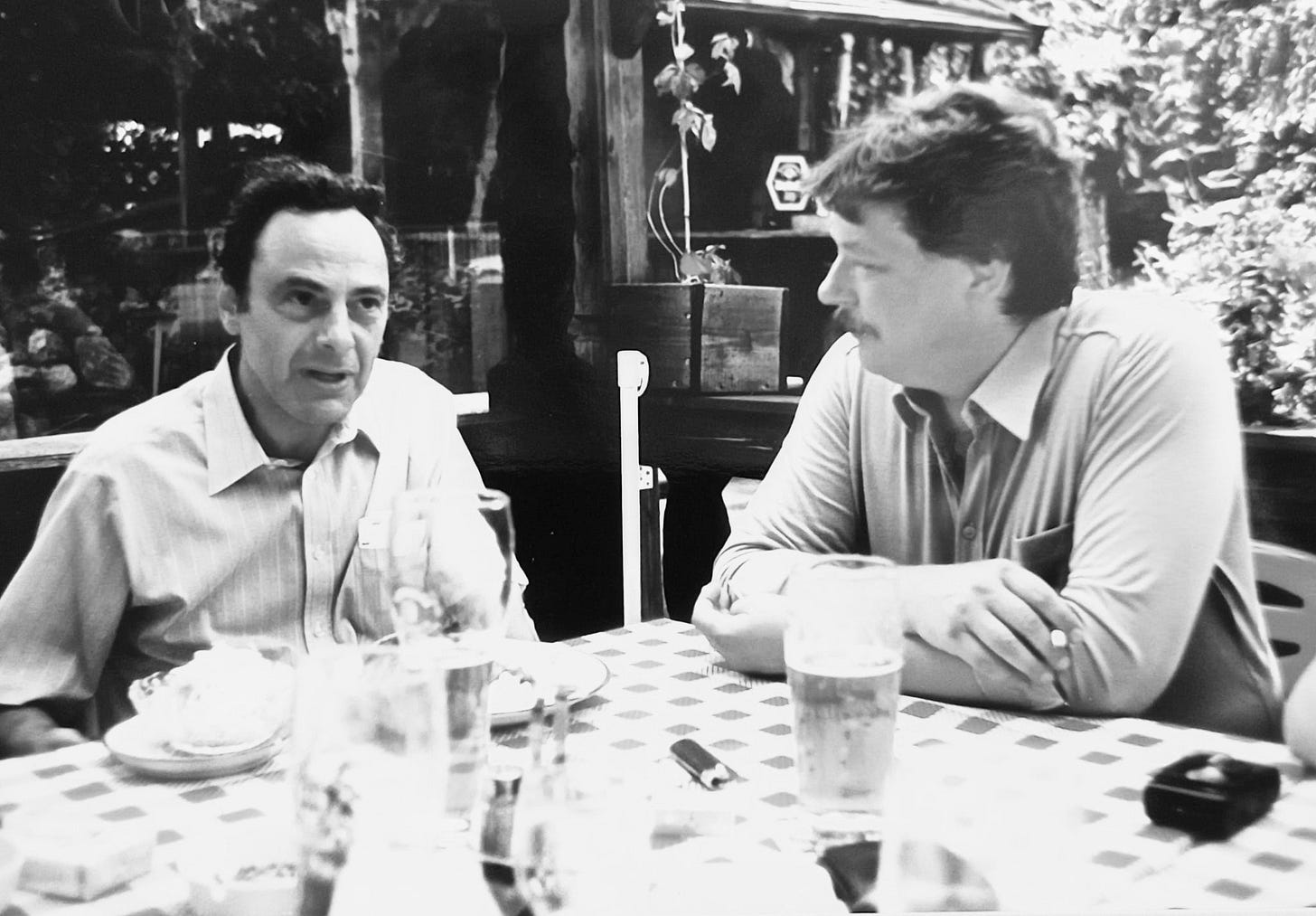A Taxonomy of Zero to Ones
Not the Peter Thiel book
"Experiencing is a myriad richness that exceeds any number of separated facets. There is vastly more than our conceptual structures can encompass. And experiencing moves—we cannot think all that just was. We feel more than we can think, and we live more than we can feel. And if we enter into what we feel in certain genuine steps, we feel more than before. And there is much more still."
Eugene Gendlin, Unpublished draft 1971
The Original Meme
I’d read Peter Thiel’s Zero to One two times, in different periods of my life, and he even very kindly signed a copy for me — from zero to one to billions and beyond!
I remember the book making quite an impression. It’s one of those books that’s short enough, and has a certain flow, that you can read it multiple times without quite remembering what it was about.
From memory, Zero to One referred to a strategy of creating a New Category of Business, that you could be a leader in. A thing not existing at all, to existing. PayPal was a business like this, creating the new category of digital payments. This is contrasted with something like starting a new restaurant; the restaurant is new, but the category of restaurant is not new.
It was a book about creating lucrative unicorn startups by doing something that fundamentally changes the world.
I had noticed over the years that I use the phrase “zero to one” extremely often—at least once a week—and I mean something very different from how Peter Thiel is using it.
People figure out what I mean very quickly, but I am still creating a clash of memes!
Zero to One in my coaching practice
Most of the time I am not talking about businesses, and if I am, it is at a much smaller scale than disrupting the world, creating an entirely new category of endeavor, and raking in billions.
These days, I am more likely to be thinking about how to edit a cocktail so that it makes versus loses money for a restaurant—very simple low-level economics, done very well, rather than being engaged with VC startup world.
But zero to one is an excellent phrase for the ways I think about unlocking affordances, and how I think about noticing and measuring things in the context of coaching. I plan to keep saying “how do we zero-to-one this?” when I am problem-solving with people because it has been so useful!
That being said, there are some specific technicalities for our computer science audience that are worth fleshing out—and that is because our computer science audience is familiar with the empty set.
Yes, the empty set. Hello!
Now, the empty set is from set theory. Set theory is an important branch of math for computer science that a lot of programmers would be familiar with.
How does this relate to zero to one?
So, zero isn’t actually the most nothing nothing that a nothing can be, in math—at least in set theory!
That’s because 0 is an integer. It is a something in so far as it is a value. You can do things with 0.
What can you do with 0?
You can add 1 to it, for example. Or 2, or 5.
You can multiply it by things. (0 * 10 = 0).
You can also add 1 to it, and then multiply it by things (0 + 1) * 10 = 10.
Turning a 0 into a 1
You can see from that example how this is related to coaching.
If you write for 0 hours a day, for 10 days, you have written for 0 hours. If you write for 1 hour a day, for 10 days, you have written for 10 hours. Very big difference!
Getting that 0 to become a 1 is therefore quite a big deal! It means that any math you do on it becomes summative in some way, versus keeping you in the same spot.
And then if you do % improvements every day, that gets to be a big number really quite fast!
So that’s one kind of 0 to 1 that I talk about. In coaching, often I talk about “doing something a little bit, versus not doing it at all,” or “noticing something a little bit, versus not noticing it at all.”
Nathaniel Branden’s self-esteem journaling follows these principles, and I would say it is a highly effective program that has improved many people’s lives.
“Doing something for only 2 minutes” is also a strategy that uses this principle.
<3
On Why the Last-Minute Valentine’s Day Present Still Counts:
“The difference between literally nothing and literally something is literally something.”
Turning a { } into a {0}
Now, the nothing that is even more nothing than 0!
There is a way of expressing numbers in set theory. A set is like a group. Representing numbers in this way can be nice for many different things, such as matrixes, linear algebra, and discrete math.
There are rules for how to perform a function or an operation on a “set” that is standardized and makes sense, and is the formalized way of “doing math on a list of numbers.”
{ 1, 2, 3, 4 } is a set containing the numbers 1, 2, 3, 4.
{ 1 } is a set containing 1.
{ 0 } is a set containing 0.
{ } is a set containing nothing.
And then { 0 } and { } are not the same things!!
There are some problems a person can have, in which a person isn’t even at 0. They don’t even know the thing that they want to add a 1 to is.
They are at empty set. Null. { }. Squiggly brackets.
There isn’t an object in their mind that they are measuring or adding to or even know they want to change.
In that case, before they can {0} to {1}, they have to { } to {0} (go from an empty set to a set containing 0).
In this way, this is close to Thiel’s zero to one concept, in that it is “making a thing appear that hadn’t existed before.”
Because not everyone is aware of the empty set, sometimes when I say “zero to one” I actually mean something more like this — making a category go from not existing to existing.
Examine this short, if you please!
In coaching, this can look like a person having seemingly very little self-awareness around something they are doing, or something another person is trying to do. They really cannot see it and are really confused.
Often I get curious if a person really cannot seem to be doing something, that they see other people do. Something about it being “a real thing that is possible” doesn’t feel true for them, specifically, and then figuring out what the blocker for that affordance is can take some time.
It’s a different kind of crux from 0 to 1-ing something, because in this case, the question isn’t about how to get the ball rolling on some kind of progress. Rather it, what to do with the feeling that some puzzle piece missing entirely from their awareness, or big roads of action seem to be missing from their action space.
By the time somebody has a name for for the missing puzzle piece, it’s a very big deal! Finding and Naming the Confusing Thing is a big component of Focusing, the practice by Eugene Gendlin.
Perhaps these explanations are not the best, or perhaps there are more zero to ones to find, but I wanted to note down the start of this taxonomy!



